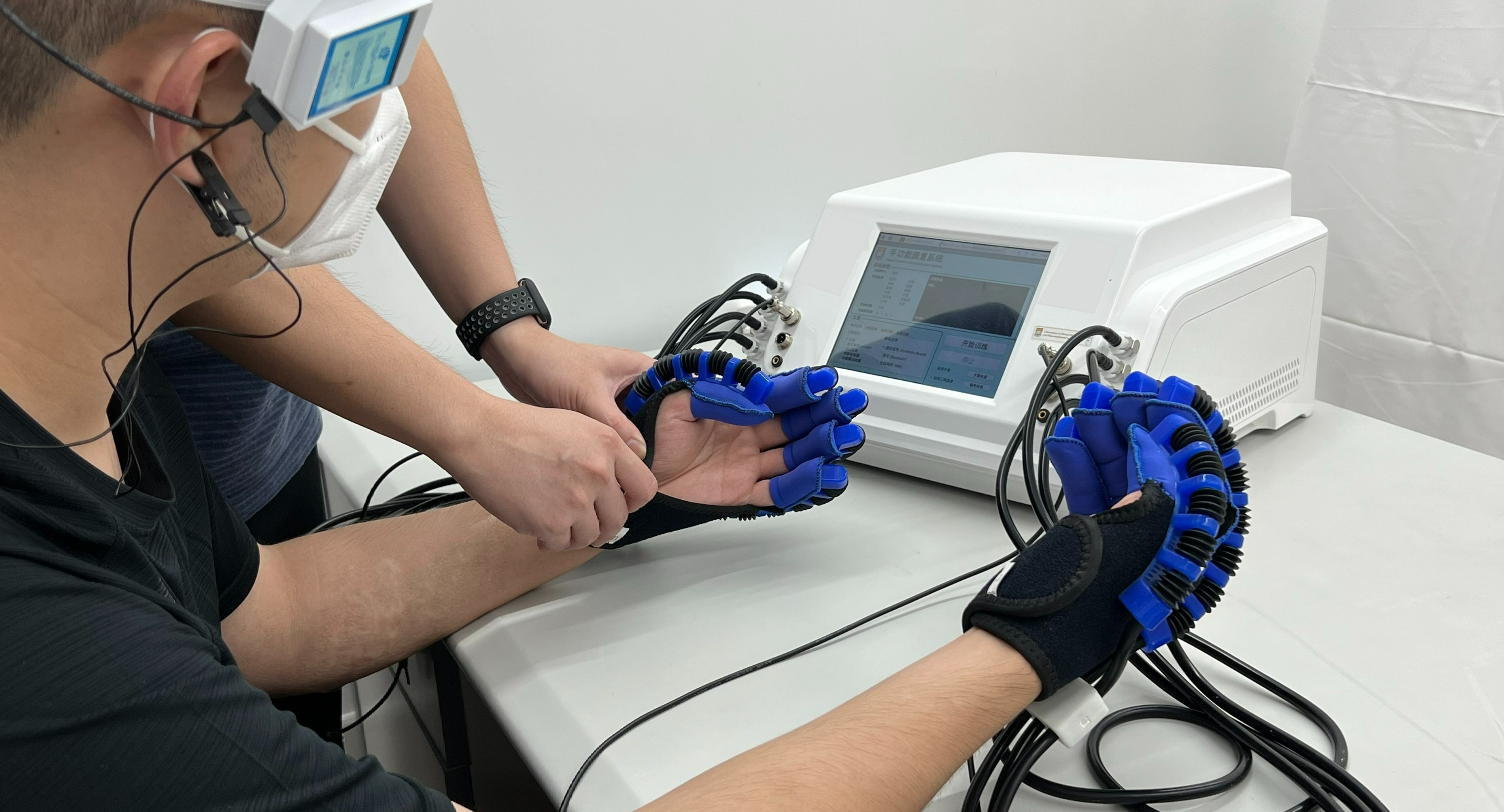A Multimodal Brain-Controlled Soft Glove for Hand Rehabilitation

KEY INFORMATION
Healthcare - Pharmaceuticals & Therapeutics
TECHNOLOGY OVERVIEW
This innovative device combines visual and tactile stimulation with motor imagery-based electroencephalography (EEG) recognition to facilitate comprehensive hand rehabilitation. The glove uses EEG electrodes to capture brain signals associated with visual and tactile stimulation. Advanced algorithms analyse these patterns to determine the user's intentions and translate them into appropriate motor commands. Additionally, the glove utilizes motor imagery-based EEG recognition, where users imagine performing specific hand movements. The wearable glove is designed with flexibility and versatility in mind. It employs pneumatic actuators strategically placed to exert pressure on specific hand muscles and joints. This allows the glove to provide customizable assistance and resistance during rehabilitation exercises.
The target market for this glove includes individuals who have experienced hand impairments due to various conditions such as stroke, spinal cord injury, traumatic brain injury or neuromuscular disorders. It is suitable for both acute and chronic stages of hand rehabilitation. Patients, caregivers, and rehabilitation centres can benefit from this technology by incorporating it into their rehabilitation programs thus enhancing the recovery process and improving functional outcomes.
TECHNOLOGY FEATURES & SPECIFICATIONS
The core components of the technology in this invention are multi-mode soft gloves for visual and tactile stimulation along with imagery-based EEG recognition algorithms to promote neuroplasticity. The glove provides a customizable and interactive rehabilitation experience by offering immediate feedback and adaptive assistance tailored to the individual’s needs. The multi-mode glove employs pneumatic actuators capable of providing customised assistance and resistance.
POTENTIAL APPLICATIONS
This technology can be deployed in the healthcare and medical industry, specifically in the field of neurorehabilitation. The applications of this technology are diverse and can be extended to various areas within the industry. Some potential applications include Rehabilitation Centres and Hospitals, Home Rehabilitation, and Assistive Devices. Based on this technology, several products can be designed, including Multimodal Brain-Controlled Soft Glove, Mobile and Computer Applications, and Assistive Hand Orthoses. Overall, the technology behind the brain-controlled soft glove offers a range of opportunities for product development and marketing in the healthcare and medical industry with the potential to positively impact individuals with hand impairments.
Market Trends & Opportunities
The global market for hand function rehabilitation was more than one billion USD in 2020. There is a strong demand in this market for technologies that can provide effective and efficient recovery outcomes. The brain-controlled soft glove offers a comprehensive approach by combining visual and tactile stimulation, EEG recognition, and adaptable assistance. The ability to personalize rehabilitation programs based on the needs of an individual and the capability to track progress remotely adds to the attractiveness of the technology in this market.
Unique Value Proposition
The integration of visual and tactile stimulation, along with EEG recognition and pneumatic actuators, creates a multimodal approach to hand rehabilitation. This combination allows for a more comprehensive and holistic therapy, engaging multiple senses and neural pathways simultaneously. Compared to conventional approaches that often focus on a single modality, this technology offers a more robust and effective rehabilitation experience. The glove's flexible design and pneumatic actuators allow for customized and personalized rehabilitation programs. Therapists can adjust the pressure, timing, and assistance level based on individual needs, targeting specific muscle groups, and adapting to varying stages of recovery. This customization enhances the efficacy and relevance of the rehabilitation exercises, maximizing functional outcomes. The technology enables remote monitoring and data analysis, facilitating virtual support and feedback from healthcare professionals. Therapists can track patients' progress, provide personalized guidance, and make data-driven adjustments to the rehabilitation program without the need for frequent in-person visits. This feature enhances accessibility, convenience, and continuity of care.
